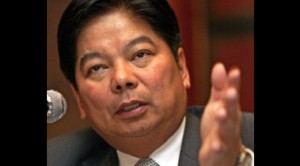Economy can weather rate hikes, says BSP
Recent adjustments to monetary conditions are expected to temper price pressures, while giving the economy breathing room for more sustainable growth, senior officials stressed Wednesday.
This comes after the Bangko Sentral ng Pilipinas (BSP) decision to hike policy rates late last month after nearly two years of keeping them at record lows.
Speaking before lawmakers on Wednesday, BSP Governor Amando M. Tetango Jr. said further adjustments may still be in the offing, citing risks that need to be contained.
“We acknowledge that a number of challenges will affect the domestic economy but we believe we can stay the course,” Tetangco said, speaking at a House Appropriations Committee hearing on the national government’s 2015 budget.
He noted several headwinds that may lead to instability in prices. These include power and weather-related issues, which both threaten the efficiency of producers, leading to further supply constraints.
Article continues after this advertisementTetangco said the country’s solid growth prospects provide the needed space that would allow the BSP to act to stem risks to its inflation target.
Article continues after this advertisementFinance Secretary Cesar Purisima last week said the BSP was sticking to its growth target for the year of 6.5 to 7.5 percent (vs. last year’s 7.2 percent). This was despite a first quarter slowdown that saw growth slumping to a slower-than-expected 5.7 percent.
Last July, consumer prices rose by an average of 4.9 percent, the highest rate since late 2011. The print in July was also faster than June’s 4.4 percent, and matched the top end of the BSP’s 4.1 to 4.9-percent target range.
Should price increases accelerate further, inflation for the year may average outside the BSP’s target range for the first time in five years. The target for 2014 was set at 3 to 5 percent. Next year, the target moves to a lower, tougher-to-achieve range of 2 to 4 percent.
High inflation has prompted the BSP to act to curb growth in the country’s money supply and rein in lending, in line with its mandate of keeping prices stable, thereby protecting the peso’s purchasing power.
